Michael P. Naughton's Blog, page 3
November 10, 2017
For Late Nighters, Insomniacs and Early Risers, Michael Connelly Never Fails
 Michael Connelly – The Late Show
Michael Connelly – The Late ShowI have been reading Harry Bosch novels for years and also enjoy the Amazon series “Bosch.” “Trunk Music” was the first Connelly book I read and have not stopped reading him since. His attention to detail in investigations is authentic, superb and on the level of Ed McBain or Joseph Wambaugh. He cranks out quality writing, but bucks the current trend in churning out books, to readers dissatisfaction, by not partnering with co-writers like some bestselling authors do to meet the demands of their readers.
Connelly does his own homework and we are the benefactor.
In his latest novel “The Late Show,” Connelly has once again created a memorable a character like Harry Bosch and Mickey Haller with the introduction of Renée Ballard. If you are a fan of strong, well-defined characters in the vein of Patricia Cornwell (Kay Scarpetta) or Sue Grafton (Kinsey Millhone), then Renée Ballard might have you hooked from the start.
Renée Ballard does not listen to Jazz like Bosch, she surfs and is a California Girl. She has a partner like Bosch but has to work her way up the ranks beginning at the deplorable midnight shift, hence the book’s title ‘The Late Show.” Like Bosch, she has her character flaws, foibles and demons which makes her relatable. Connelly is best at weaving multiple cases to keep us engaged which is authentic to real life police and detective work. Their days are anything but routine.
What I enjoy best about Connelly’s writing, and is consistent in “The Late Show,” is the great Los Angeles geographical descriptions from the streets, freeways, Hollywood and beaches like Venice. I live in L.A. so the visuals come to life on the page. Connelly characters are rebellious and always carry the anti-authority seed of “Dirty Harry.”
Ditch your cell phone. Close your office or bedroom door. The Late Show is for late nighters, insomniacs and early risers. Connelly Never Fails to keep us continuously interested in his writing. I look forward to the next one.
I hope you found this review helpful.
© Michael P. Naughton
The post For Late Nighters, Insomniacs and Early Risers, Michael Connelly Never Fails appeared first on Michael P. Naughton.
February 9, 2017
PURPLE: ‘STILL REMAINS’ ONE OF MY FAVORITE STP ALBUMS
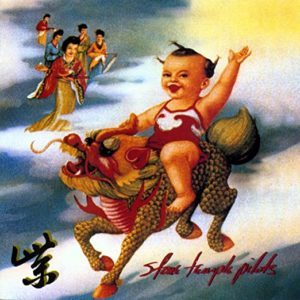 Stone Temple Pilots 1994 Purple album
Stone Temple Pilots 1994 Purple albumJune 18, 2016
By Michael P. Naughton
1994 was a good year for rock music and pop culture. Grunge was still going strong and the world had a fresh wave of Supergroups not seen since the ‘70s. “Superunknown” /Soundgarden, “Vitalogy”/Pearl Jam, “Jar of Flies”/Alice in Chains and this seminal album, “Purple” by Stone Temple Pilots. This was a time when people still bought CDs and albums.
Kurt Cobain died in April ’94. Purple was released in June 7th, two months later. Five days later, the world’s and media attention was focused on the O.J. Simpson Murder trial on June 12th and Bill Clinton was our president. It was the 25th Anniversary of Woodstock and Woodstock ’94 was rebooted. You could still buy gas for around a buck and see a move for $4. Pulp Fiction was all the buzz in Hollywood.
WHY SCOTT WEILAND LIKED PURPLE MORE THAN CORE
According to Scott Weiland’s bio, he liked Purple more than Core, and I have to agree with him. He felt “Purple … was more honest and biographical. It was also more heartfelt and heartsick.”
Core was a solid album and blew the doors wide open for STP, and Plush is one of the greatest rock anthems ever written. However, in Purple, STP follows Led Zeppelin’s second album trajectory. If you are conversant with Zeppelin than you know what I am talking about. Purple, like Zeppelin 2, expands and defines the group. They are no longer circumscribed by the grunge genre. To compare and contrast, you have “Still Remains,” Pretty Penny,” “Big Empty” and “Kitchenware and Candy Bars” compared to Led Zeppelins: “Ramble on,” “What is and What Should Never Be,” and “Thank You.” These songs break the two groups out of their predefined music genres and redefine them.
Dean DeLeo adds acoustic layers and atypical chords (minors and sevenths) and style choices like Jimmy Page and firmly establishes STP as songwriters and superior musicians. He serves the song and does not focus on riffing like most rock guitarists. But when Dean breaks out into leads, he has a distinctive and tasteful style like Page. Bassist Robert DeLeo wrote one of the band’s biggest hits on the album: “Interstate Love Song.” This song will never die. Still sounds fresh today. Robert DeLeo’s innovative bass-through-wah-wah pedal effect on “Vasoline,” is riveting.
Drummer Eric Kretz channels Bonham in the hit song, “Vasoline” (you hear Bongos reminiscent of Zeppelins “Whole Lotta Love” bridge section). It is noteworthy of Kretz’s detail as a drummer. He mentioned in a Drum article that he used a vintage 1929 Ludwig kit on the verses of “Big Empty” and his GMS kit on the choruses. This is another production and performance example of sonic nuances that make all the difference to the listener.
Grinders on this album include: “Meatplow.” “Superman with Silvergun” (my favorite) with Drop D tuning. “Unglued,” Lounge Fly” (open D tuning) and “Army Ants.” These songs kick ass.
Vocally and lyrically, Scott Weiland excels on Purple. “Vasoline,” “Unglued” and “Pretty Penny” all deal with addiction and Scott was battling heroin addiction at this time. He becomes a modern day Coleridge or De Quincey. He was stuck in the “Vasoline” and could not kick it. And this habit was growing into what he once referred to as a “big black monster.” According to his biography, Scott stated that, “Only heroin could turn up the quiet. Only heroin took me to a place where shame, guilt and remorse were magically washed away.”
CAN YOU JUDGE A BOOK/ALBUM BY ITS COVER?
In the case of “Purple” yes. The intriguing design on the cover depicts a smiling baby riding the dragon. For years, I thought this was Zen-like, boy was I wrong. According to Weiland’s bio it is actually a package of China White (heroin). That aside, Purple does exude a balance of intensity and equanimity, and this energy is captured, crystallized and concretized by the gifted and incomparable Brendan O’Brien (their producer).
I don’t wish to glorify addiction by any means. However, this music and era was dangerous. It was authentic. It stood at the edge of the abyss. The great poet Charles Bukowski would advise: “Don’t try.” I’m sorry, but today’s music lacks the same street realism. Pitch perfect American Idol singers and spurious tattoo-heavies don’t convey the same reality.
PURPLE HAS STOOD THE TEST OF TIME
Label it what you will: Grunge, Alternative Rock, Hard Rock, Heavy Metal, Psychedelic Rock… 22 years later, ‘Purple’ “Still Remains” a timeless and enduring work and it has stood the test of time.
The post PURPLE: ‘STILL REMAINS’ ONE OF MY FAVORITE STP ALBUMS appeared first on Michael P Naughton.
June 26, 2016
THIRD TIME’S A CHARM AND A BIG CORNER TURNED FOR STONE TEMPLE PILOTS (REVISITING TINY MUSIC 20 YEARS LATER)
“You don’t have to reinvent the wheel… just steal the hubcaps.” – Michael P. Naughton
 Stone Temple Pilots 1996 album Tiny Music
Stone Temple Pilots 1996 album Tiny Music
From the moment you “Press Play” literally, you are a passenger in a different car on this new highway of STP’s career. The grunge of Core and Purple is supplanted with 60s Lennon/Beatles influences. Some critics suggest STP lifted from Redd Kross whom they toured with. Six of one/half dozen of the other as they say. It is still great music none-the-less and the commercial strength and versatile STP formula of songwriting is most evident of Tiny Music. They are a veritable chameleon.
LED ZEPPELIN NOT GUILTY… NEITHER IS STP
STP like many great musicians and artists, borrow and lift and re purpose. It is the nature of the songwriting beast and the Beatles were guilty of it too. This review is written at a time of Led Zeppelin’s Stairway to Heaven trial concluding in a “Not Guilty” verdict. Cleared of plagiarism once and for all. It is also the 20 year anniversary of Tiny Music.
But lets travel back in time to 1996 when “Tiny Music from the Vatican Shop” hit the stores (yes, there were still record stores like Tower Records on Sunset to sell it).
WHAT WAS HAPPENING IN 1996 WHEN STP RELEASED “TINY MUSIC”
If you went to the movies, you would’ve seen Jerry Maquire (although I did not, I got sick of “Show me the Money”). If you liked comedies you would’ve seen Jim Carrey as “The Cable Guy,” or maybe “Striptease” (I read the book/skipped the movie). “Swingers”… Again tired of everybody thinking they were “so money.” Dusk Till Dawn. You didn’t have a Pentium II yet in your computer. Palm Pilots, yeah, the thing with the pen, were the early Smartphones. Pro Tools, which would revolutionize home recording for musicians, was still in early development (Pro Tools finally reached 24-bit, 48 tracks in ’97).
More to the point, music in ’96 was changing. “All Eyez” were on Tupac (California Love/I Ain’t Mad at Cha were damn good) along with Snoop’s Doggfather and you probably listened to both — Maybe Beck’s innovative Odelay. Cake was “Going the Distance.” — I tuned into DJ Shadow’s “Entroducing” and Tricky myself. Whatever you listened to, music was turning the corner once again in our culture.
But here is where STP gets it right.
Rappers, DJs, Trip Hop, rock, namely STP were all reaching backwards to the old masters and creating and updating new styles of music. All of these artists were experimenting with new blends, beats and textures.
Tiny Music’s pacing is well thought out, with Brendan O’Brien once again at the helm producing. The first three cuts, like “Purple,” is classic driven rock and roll.
Lyrically and vocally Weiland reached back to Lennon and Bowie (Rock and Rock Suicide/Bowie, Pop Suicide/STP). He said they “wanted to make a statement” and “deconstruct and go low-tech, get to the heart of the matter.” “Big Bang Baby” is Rolling Stones “Jumping Jack Flash.”
“Does anybody know how the story really goes, or do we all just hum along…”
Weiland also felt it was a dark record. You still have consistent themes of addiction. “Lady Picture Show” is commercial on the surface, but deals with a dark subject.
You will notice a different tone on Dean DeLeo’s guitar. According to the Below Empty blog, DeLeo is quoted as saying, ‘”Tiny Music… is a ’57 Les Paul TV Special that I played through a ’66 Marshall 18-watt 2×10 combo. That amp loves P-90’s. I used that combination on “Big Bang Baby.”‘
Kretz’s distinctive snare on “Tumble in the Rough” will also catch your ear.
“And So I Know,” is where the detour begins. This song is reminiscent of Little Anthony and the Imperials, “Goin’ Out of My Head”.
Robert DeLeo, contributes two excellent instrumentals and shows deep roots on: “Press Play” and “Daisy.”
Zeppelinesque “Trippin’ on a Hole in a Paper Heart” and “Adhesive” just nail it, but STP makes it their own. They added a soulful Miles Davis style solo on “Adhesive,” foregoing a traditional guitar solo. However on “Trippin’ on a Hole,” we do hear DeLeo uniquely channel Jeff Beck.
“Art School Girl” is tongue and cheek, and a throwback to Nirvana. Again, this is what makes STP great. They can mimic and make it their own.
The ride ends with “Seven Caged Tigers,” and STP has proven that Tiny Music is Big Music and relevant music even now, 20 years later.
Happy Anniversary.
The post THIRD TIME’S A CHARM AND A BIG CORNER TURNED FOR STONE TEMPLE PILOTS (REVISITING TINY MUSIC 20 YEARS LATER) appeared first on Michael P Naughton.
December 5, 2015
Agatha Christie and the Mystery of Mindfulness
“The best time for planning a book is while you’re doing the dishes. ” – Agatha Christie
 “The best time to plan a book…”
“The best time to plan a book…”Years ago I read a book by Thich Nhat Hanh entitled the “Miracle of Mindfulness.” As someone who has had the humbling task of washing dishes domestically without a dishwasher, this subject caused me to ruminate on the profundity of this quote from his book:
“If while washing dishes, we think only of the cup of tea that awaits us, thus hurrying to get the dishes out of the way as if they were a nuisance, then we are not “washing the dishes to wash the dishes.” What’s more, we are not alive during the time we are washing the dishes. In fact we are completely incapable of realizing the miracle of life while standing at the sink. If we can’t wash the dishes, the chances are we won’t be able to drink our tea either. While drinking the cup of tea, we will only be thinking of other things, barely aware of the cup in our hands. Thus we are sucked away into the future -and we are incapable of actually living one minute of life.”
― Thích Nhất Hạnh, The Miracle of Mindfulness
If you think this teaching merely applies to dishes, think again. We live in a world of constant distraction and the dish can be substituted for almost anything that requires our attention, from the mundane to the mind boggling. When we are fully concentrated on the task, that’s when we achieve what psychologist Mihalyi Cskszentmihalyi called “flow.” This has also been referred to as the “white moment” that athletes and performers experience, and I frequently have these moments while immersed in playing music or writing. Everything seems to fall away and I am fully connected on the task or experience.
Years later, I would read another quote by one of my favorite mystery writers, the great Agatha Christie who claimed to get her best ideas while doing the dishes. This quote was not in conflict with Hanh in my opinion. Conversely, she shifted her creative focus but credits the task of dishwashing as the inspiration. I’m sure when she sat down to realize her book and write it, she was immersed in the moment and “washing the dishes” so to speak.
Ms. Christie may not have been mindful of the dishes in a Zen-like way, however the simple task of washing dishes served her well in her storytelling and gave millions and generations of readers the gift of her writing.
If you find yourself without a dishwasher, or maybe facing writer’s block and must roll up your sleeves to do this dreaded chore, remember to enjoy the moment and either focus on the simplicity of the moment or your next great mystery. Either way, you have made your world a better place.Agatha Christie
The post Agatha Christie and the Mystery of Mindfulness appeared first on Michael P Naughton.
August 29, 2015
Why James Dean Will Never Die and Be 4Ever Cool
Too Fast To Live, Too Young to Die: James Dean’s Final Hours
Keith Elliot Greenberg
“Still looking for that blue jean, baby queen
Prettiest girl I ever seen
See her shake on the movie screen, Jimmy Dean…” (James Dean)
– David Essex from the song “Rock On”
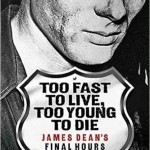 Too Fast To Live, Too Young to Die by Keith Elliot Greenberg
Too Fast To Live, Too Young to Die by Keith Elliot GreenbergIs there anything new about the tragic and untimely death of James Dean that the world does not already know? Author Keith Elliot Greenberg’s new book answers a resounding yes. Greenberg is known for his book, “December 8, 1980: The Day John Lennon Died.” In Too Fast to Live, Too Young to Die, Greenberg follows the biographical trajectory of Warren Newton Beath’s excellent book, “The Death of James Dean” (c. 1986). Like Beath’s book, Greenberg zeros in on the facts surrounding Dean’s death and final hours, his motivations and the world James Dean occupied at the time of his fatal crash in the Porsche 550 Spyder on September 30, 1955. For the James Dean fan, I recommend reading both Beath and Greenberg’s books. Greenberg builds on preexisting facts and tells Dean’s tragic ending in an investigative and engaging style adding new details from additional sources, also focusing more on mechanic Rolf Weutherich, Dean’s passenger at the time of the crash. We know, with certainty, what James Dean did in his final days thanks to these two books.
To think that Dean made a meager three Hollywood films, yet his legend lives on in hundreds of biographies, and multitudes of fans visit his grave every year. Is it any wonder about our abiding fascination with his life, method of acting, screen persona and death that remains au courant?
I like to read the Acknowledgment section in biographies. It helps me glean insight into just how far the author delved into their research, especially in the perfunctory and lazy age of Wikipedia. Greenberg credits his team at Hal Leonard Performing Arts Publishing Group, his editors, and the best resource of all: the public libraries. He referenced books from LAPL and Fairmont Public Library. The end result: He and his team assembled a riveting entertainment biography of legendary James Dean. I also like the cover design showing a gritty, atypical and unglamorized photo of Dean, as if he had just been working on his car. No airbrushing here.
So why write another biography? There are new details which I won’t disclose. You’ll have to check it out for yourself. This book is a fast read with swift and coherent writing style.
Dean has been gone now for 60 years. He would have been 84 years old this year had he lived. Gone too soon. He epitomized cool and was quoted: Dream as if you’ll live forever. Live as if you’ll die today.”
I’m listening to Lana Del Rey’s Blue Jeans as I write this review (she references James Dean) in her song. The references continue. The legend lives on. James Dean will never die and remains 4Ever Cool.
I read this book courtesy of Netgalley for publishing an honest review.
The post Why James Dean Will Never Die and Be 4Ever Cool appeared first on Michael P Naughton.
March 1, 2015
In Search of… Leonard Nimoy the Poet
As the world mourns the loss of Leonard Nimoy, famously known as Dr. Spock, I decided to boldly go where few other fans have gone In Search of… Leonard Nimoy the Poet.
I was a big fan of the 70’s series In Search of… this was mainly due to Nimoy’s enigmatic narration of the television series. The series focused on strange mysteries and phenomenon… the unexplained.
But back to Nimoy the poet. As it turns out Leonard Nimoy was a prolific poet with seven books to his credit. As a poet and publisher of actor Michael Madsen’s poetry, I tend to gravitate to this sensibility. Nimoy’s poetry has a Hugh Prather quality to it. Simple free verse of love and relationships. It’s not for everyone, but does have merit. I think in years to come people and fans with seek out Nimoy the poet and celebrate his words and poetic legacy.
May his poetry live long and prosper.
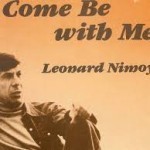 Nimoy the Poet
Nimoy the Poet
The post In Search of… Leonard Nimoy the Poet appeared first on Michael P Naughton.
January 1, 2015
5 POETS THAT WILL IMPROVE YOUR PERCEPTION & OUTLOOK ON LIFE
You might have spent time with Homer, Poe, Plath, Ginsberg or Gibran and I personally applaud you if you are conversant with their work. Great poets should inspire us to reach deeper within ourselves and seek the mystery of the words behind their words, so that when we not only read their poetry, the words take on a life of their own and become words to live by. We become better people as a result. They provide an argosy that we can continuously drink deep from in moments that we are unable to describe or find ineffable whether hard times or celebratory moments.
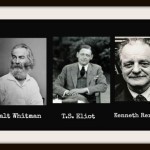
Blake, Whitman,T.S. Eliot, Rexroth, Bukowski
Universal themes that are not bound by time but experienced by each of us in this moment transcend and transform our thinking. Whatever your belief system, race color or creed. These poets speak a universal language of the soul.
When we read their words, they have the power to change, inspire and influence our perception and outlook on life.
As a culture, we do not read enough poetry. You’re missing out if you don’t, but it is never too late to start.
It would be impossible to narrow done my personal list of poets,
however these poets 5 poets are my personal favorites.
#1 William Blake (1757- 1827)
A true eccentric, William Blake was a poet, painter, engraver and printer. Only Dante comes to mind as an equal when we combine the rarity of the gifted poet/painter combination. The 60s and beatniks tuned into Blake’s message and found his “Doors of Perception.” Aldous Huxley and Jim Morrison tapped Blake’s wealth of words and themes of transcendence.
Blake felt that he must create a system or be enslaved by another mans. He took this to the extent of creating his own mythology.
Blake will improve your vision with rich metaphors and symbolism.
WITHOUT CONTRARIES IS NO PROGRESSION
We live in a world that seems to be in constant conflict. However, through Blake’s Marriage of Heaven & Hell, we begin to see that “without contraries is no progression.” Attraction and repulsion. Reason and energy, love and hate are necessary to human existence.
Only struggle results in change. This is a hard concept to grasp, but how can it be any other way. Everything from opinions to laws and forces of nature help us progress. Some problems are not ours to fix, in fact when we watch our crazy world go by we might agree that:
To quote Blake: Opposition is true friendship.
A true rebel that teaches us to see heaven in a wildflower.
#2 T.S. Eliot (1888-1965)
He wrote about disillusionment of his era and the uncertainty of years to come. Disassociation with surroundings and city life uncertain which still surrounds us today and will every generation to come.
You must read The Wasteland.
HOLLOW MEN & WASTE LANDS
The dead tree gives no shelter,
The cricket no relief,
And the dry stone no sound of water.
Only there is shadow under this red rock.
Here Eliot shows us “fear in a handful of dust.”
We are the hollow men,
We are the stuffed men,
Leaning together,
Headpiece filled with straw. Alas!
#3 Walt Whitman (1819-1892)
Walt Whitman broke the mold and conventional poetry with Leaves of Grass. Why Whitman still matters is the way in which he reflected his world. If you read Leaves of Grass you will notice that Whitman gives us hope and optimism in every verse…
Here Whitman gives us a gift.
THE OTHER I AM
“I believe in you my soul, the other I am must not abase itself of you. And you must not be abased to the other.”
“I cannot understand the mystery, but I am always conscious of it myself as two—as my soul and I Celebrate yourself.
Remember this great line:
“I swear the earth shall surely be complete to him or her who shall be complete.
The earth remains jagged and broken only to him or her who remains jagged and broken.”
#4 Kenneth Rexroth
Considered the “father of the Beats,” Rexroth is not referenced enough. Sure we know Kerouac and Ginsberb whose names are synonymous with the Beat Generation. But Rexroth’s style. Rexroth teaches us the Universalization of the human soul and the creation of the true person.
THE SIGNATURE OF ALL THINGS
SUCHNESS
What is substance?
Our Substance is whatever we feed our angel.
The perfect incense for worship
Is camphor, whose flames leave no ashes.
LONELINESS
Loneliness, speak to me.
Talk to me. Break the black silence.
Speak of a tree full of leaves.
Of a flying bird, the new moon in the sunset,
A poem, a book, a person…”
# Charles Bukowski
Buk lived a hard life and was a late bloomer. He appeals to the working man/woman who feels and lives the classic “quiet lives of desperation.” He spoke in layman’s terms. No pretensions. Easy to read, but hard to forget.
Consider these great lines:
LET THE BLUEBIRD IN YOUR HEART OUT
… and to walk across the floor
To an old dresser with a cracked mirror
See myself, ugly,
Grinning at it all.
What matters most is
How well you walk through the fire.
Like the fox,
I run with the hunted
And I am not the happiest man on earth
I’m surely the luckiest man alive
There is a bluebird in my heart that wants to get out
But I’m too tough for him,
I say, stay in there, I’m not going to let anybody see you..”
These 5 poets challenge us and our perceptions of the world around us. You will see the world in a different way after reading them. They will improve your perceptions and outlook if you take the time to apply them.
The post 5 POETS THAT WILL IMPROVE YOUR PERCEPTION & OUTLOOK ON LIFE appeared first on Michael P Naughton.
August 19, 2014
L.A. Crime Writers Gregg Hurwitz and Miles Corwin are joined by Actor Kevin Dobson
New York Times bestselling author Gregg Hurwitz and L.A. Times bestselling author Miles Corwin discuss L.A. Crime, L.A. Crime fiction and their latest books. They are joined by actor Kevin Dobson from the legendary Kojak TV series who has played detectives many times, and shares how he interpreted the material. Moderated by Michael P. Naughton.
L.A. Crime Writers Gregg Hurwitz and Miles Corwin are joined by Actor Kevin Dobson
The post L.A. Crime Writers Gregg Hurwitz and Miles Corwin are joined by Actor Kevin Dobson appeared first on Michael P Naughton.
July 6, 2014
A Curious Man Who Asked What’s the Strangest Thing You Know?
“This world is all a fleeting show,
For man’s illusion given.” – Thomas Moore
A Review of Neal Thompson’s A Curious Man – The Strange & Brilliant Life of Robert “Believe It or Not!” Ripley
by Michael P. Naughton
I was raised on Ripley’s Believe it or Not! My first encounter was the Ripley museum in Niagra Falls, then subsequently reading and collecting the Ripley’s Believe it or Not! True Ghost Stories (Gold Key Comics), and then years later watching the television show hosted by Jack Palance.
I was excited about the release of Neal Thompson’s biography, and like the author wrote in his notes on sources: “I never stopped to consider the man behind it all.”
And there was a good reason for that. Unlike books on, say, Houdini.
A definitive biography simply did not exist.
Until now!
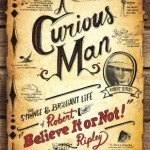
The Strange & Brilliant Life of Robert – Believe it or Not! Ripley
Thompson’s biography is painstakingly and passionately researched. According to the author, he was given “unfettered” access to Ripley Entertainment Inc. in Orlando, and was assisted by the empire’s archivist, Edward Meyer, and VP, Norm Deska, to complete the intriguing life of an extraordinary personality. This included journals, home movies, letters, photographs and essentially the Ripley jackpot of information. He also invested many hours in research at University of North Carolina (Wilson Library), which is home to thousands of documents on Ripley.
Norbert Pearlroth, an intelligent man Robert Ripley hired as an assistant, translator and invaluable resource– a proverbial “fountain of knowledge” –said it best about why we’re drawn to Ripley’s world. He stated, “Our daily life is so cut and dried that we get relief from fairy tales… except his (Ripley’s) fairy tales are true, and this excites people.”
If one stops to think about how a cartoonist interprets his world, it’s a unique perspective and perception. This makes sense why Ripley was drawn to the caricatures of life and all of our world’s oddities. BION – The question itself got us thinking and educated and entertained us.
His first cartoon was sold to LIFE magazine at 18 years of age for $8, and it was this talent alone that would catch the eye, and land a lucrative contract with William Randolph Hearst (at that time one in four Americans read a Hearst newspaper). What’s astounding is Ripley went on to make millions at one of the worst periods in US History: The Great Depression. This is similar to the success story of cartoonist Will Eisner who was rich by age 22. These men paved the way.
Thompson’s writing style is congenial and cohesive. A stickler for details. We learn of Ripley’s world travels, his rebellious spirit and relationships, and reading this book made me appreciate him all the more.
A note on design: I love the tactile feel of this book and design by Jaclyn Reyes and Three Rivers Press. This is one you can’t “feel” on a digital reader… you need a hard copy.
If you were to ask me, “what’s the strangest thing I know,” I would say: The great writer Tennessee Williams choked to death on a plastic cap from a nasal spray bottle.
Believe it or Not!
“I received this book for free from Blogging for Books for this review.”
The post A Curious Man Who Asked What’s the Strangest Thing You Know? appeared first on Michael P Naughton.
September 23, 2013
And I Quote… Original Quotes by Michael P. Naughton
quotes Michael likes
“Be the competition you wish to see in the world.”— Michael P. Naughton
Goodreads Quotes
The post And I Quote… Original Quotes by Michael P. Naughton appeared first on Michael P Naughton.



